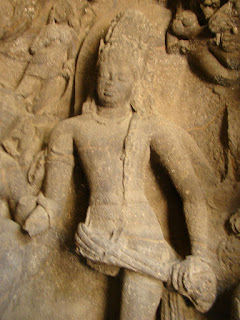Worship of Shiva as Rudra during Vedic Era
 |
| Chinmaya Panda, ASI monument . (26 Feb 2011). Creative Commons. |
Rudra was one of the major deities in the Hindu pantheon during the Vedic era. Although Rudra might not be Shiva, as we know him today, he was considered to be the precursor to Shiva. There have been speculations that equate these two entities to be the same but it is widely acknowledged that Rudra is primordial to Shiva. The Rig Veda (c. 1200 B.E) described Rudra to be a terrifying, capricious deity who controlled over disease and the wild. The worshippers of Rudra believed that He personified their fears and anxieties in an unfamiliar territory that could possibly be surrounded by hostile tribes and unfavorable nature. However, they also acknowledge the other facets of Rudra as the bestower of health and comfort, the healer, and the fair God who upholds the moral order.
Initially, during the Vedic era, people are believed to be familiar with Rudra as the Wild One- as a God of anger, death, and destruction, thus fearing him the most regardless of his good nature.
However, over time, owing to his powerful nature, people started to see Rudra as a deity to love and not fear. The perspective of Rudra changed from the Lord of Storm, Wind, and Hunt to the Lord of Songs, Sacrifices and He who possessed healing remedies, consequently seeking blessings from him. Muir,J.
Rudra's physical form was warrior- like which could have made people of those times perceive him as a fearful God. Over the centuries, the striking similarities in the personality of Rudra and Shiva resulted in the amalgamated term Rudra-Shiva as coined by scholars. In the Svetsvara Upanishad, for instance, a text possibly dating back as far as the sixth century B.C.E., Rudra-Shiva is proclaimed to be the primordial creator.
Initially, during the Vedic era, people are believed to be familiar with Rudra as the Wild One- as a God of anger, death, and destruction, thus fearing him the most regardless of his good nature.
 |
| Napoleon 100, 19th Century textbook on Hinduism (15 Jun 2012). Public Domain. |
Rudra's physical form was warrior- like which could have made people of those times perceive him as a fearful God. Over the centuries, the striking similarities in the personality of Rudra and Shiva resulted in the amalgamated term Rudra-Shiva as coined by scholars. In the Svetsvara Upanishad, for instance, a text possibly dating back as far as the sixth century B.C.E., Rudra-Shiva is proclaimed to be the primordial creator.
 |
| Ramanarayanadatta astri, Mahabharata (10 Sep 2012). Public Domain. |
Look at the Prezi below to see the symbolism behind the aspect of Rudra.
According to lectures, Brahman refers to the oneness of all things and the very aspect of Rudra-Shiva is said to embody Brahman. Consequently, Rudra-Shiva came to be perceived to be the protector and creator of all things, and soon enough began to resemble Shiva as he is known today.
 | |
|
Comments
Post a Comment